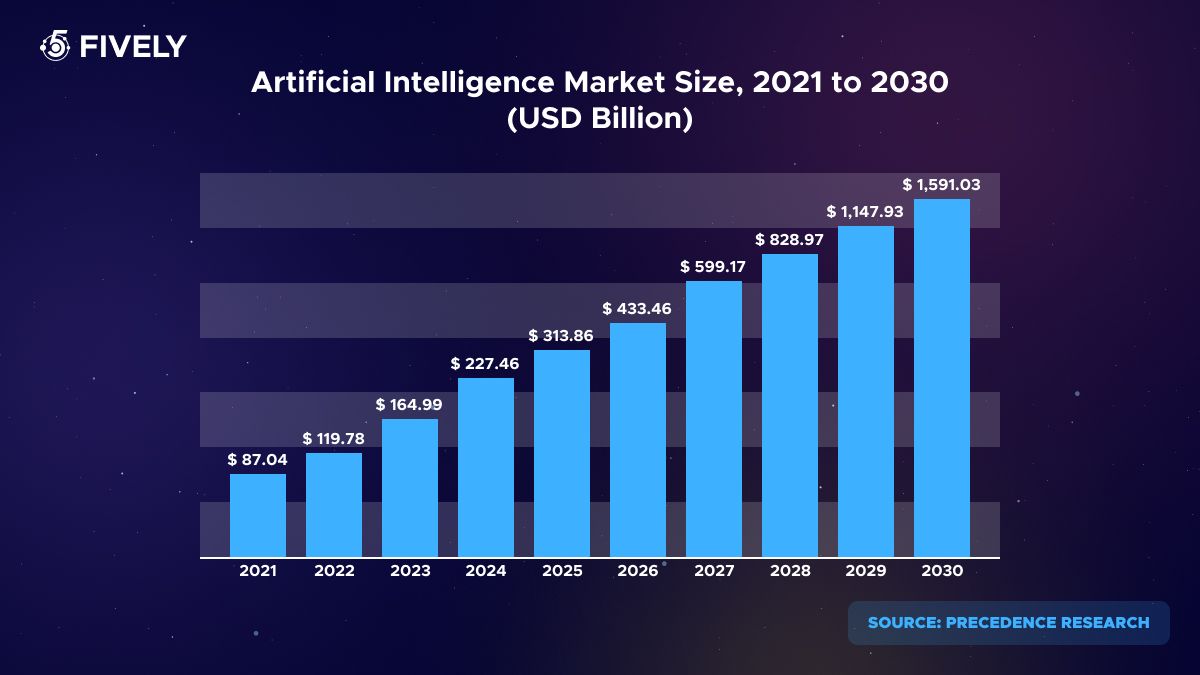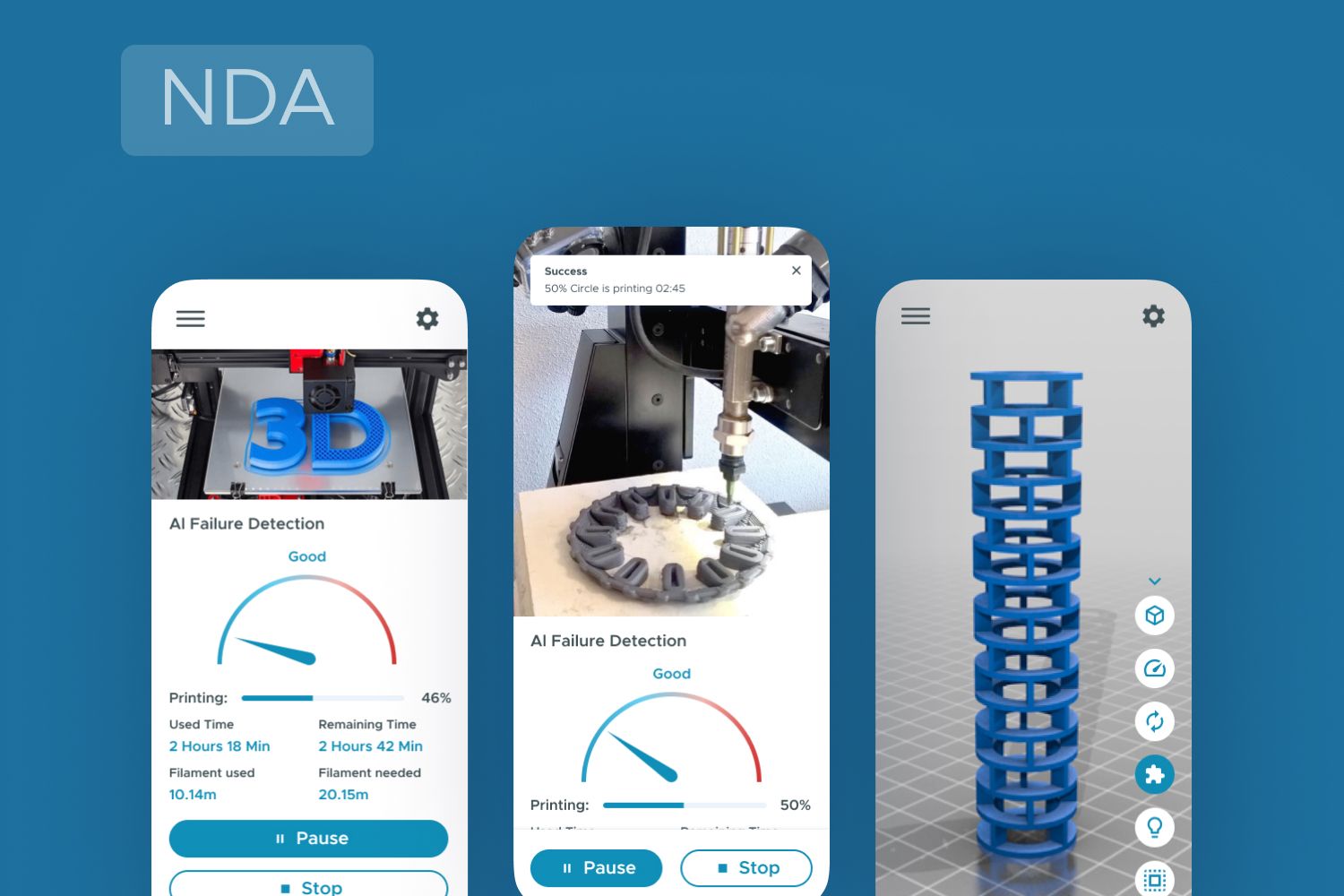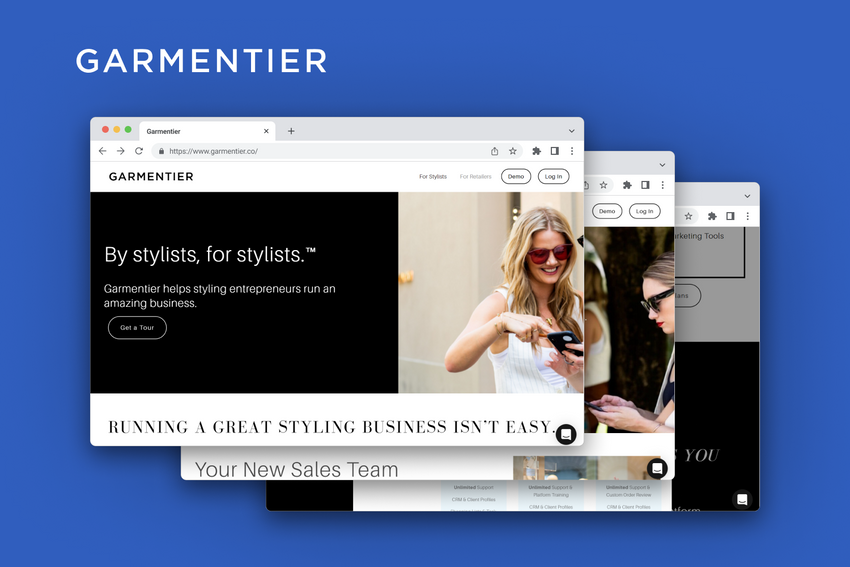Cloud Application Development: Trends and Innovations
Discover the best cloud app development trends and innovations!
If an average user is relishing the advantages of the cloud with Google Drive and Dropbox, business owners are reaping the profits of cloud application development in two ways: selling them to a client and optimizing business workflow.

Be it a SaaS app you developed, the software you migrated to the cloud, or only planning to adopt cloud computing, the benefits of the technology are conspicuous. But it doesn’t stand still, and new trends emerge as the demands of the audience become more sophisticated. So, adopting the cloud is only the beginning; you need to keep up with the tech evolution and continue to enhance your app.
Let’s cover some of the newest trends in cloud technology, but first, brush up on its essence.
What Is a Cloud Application and Cloud Technology?
A cloud app is one that can be reached via the internet and whose data is stored in the cloud. Almost any app can be built to run on the cloud, as the technology is blind to industry. But what is the cloud itself?
To our deepest regret, cloud apps aren't physically located in the puffy clouds in the sky, though the term stems from their resemblance. The vast expanse of the sky serves as a metaphor for the internet, and each cloud is, well, a scope of servers belonging to a particular company.
The biggest cloud service providers are Amazon (AWS) and Google, which have massive servers that store data from all around the world.
So, when you send your business data or personal photos to the cloud, it means that you’re sending them to distant servers that are not located in your house and are not hosted by you. In essence, the cloud allows you to forget about the maintenance of servers, which was a big pain and expense item for software owners before cloud technology proved to be much more efficient. Other advantages of the cloud include:
- Flexibility
You can easily decrease the storage capacity during periods of lower demand, and once your traffic soars again, you can instantly increase it.
- Cost-effective
You pay only for the space you actually use and don’t pay for on-site hardware.
- Data loss prevention
You can set a period of time for a backup, so your data won’t be lost just because your computer’s motherboard was burned.
- Environmentally friendly
Compared to local data centers, big cloud providers leave a smaller carbon footprint because they serve a lot of companies at once and claim to use renewable energy sources. A survey shows that businesses that moved their software to AWS decreased their carbon footprint by around 72%.
Cloud Development Platforms, or How to Build an Application in the Cloud
One of the most effective methods of application development in the cloud boils down to working with one of the cloud development platforms. There, developers build, deploy, manage, and scale an app's capacity when needed. Some of the most popular platforms are:
- AWS Cloud Development Kit;
- Google Cloud Platform;
- Microsoft Azure;
- Heroku.
All of them consist of a set of tools and services essential for cloud-based development. However, developers are not confined to using them; they can resort to traditional development tools. Moreover, they can complement them with containerization or low-code platforms, and we'll delve into that in more detail later on. On the whole, software engineers choose the most appropriate technology after exploring the business requirements of an app and budget constraints.
Modern Trends in Cloud App Development
The market size of cloud computing is expected to reach more than $1,2 billion by the end of 2027, up from $545.8 billion in 2022. The drastic rise is natural, and the increasing demand will lead to the rapid evolution of technology.
Today, IoT apps, web apps, iOS apps, and small business apps can all interact with cloud services and store their data on the cloud. The innovation potential is immense as cloud computing continues to permeate practically every sphere of software development, and little wonder why. So, let’s look at some of the most prominent tendencies in developing cloud applications and other technologies that amplify the potential of this technology.
DevSecOps
Organizations find that the top challenge with using the cloud is security. That’s why DevSecOps uncovers another facet of the culture that deals primarily with the elimination of security breaches.
DevOps has already become ubiquitous, and it’s even a shame not to apply the culture to software development. But the new approach means merging DevOps and the best security practices to make sure that the end product is safe to use. Basically, security checks and risk assessment are woven into every stage of development, and the code is being reviewed for the proactive detection of errors and vulnerabilities.
DevSecOps also facilitates the automation of compliance and governance processes to ensure that cloud apps adhere to all regulatory requirements and internal policies.
AI and ML
Hardly any software today functions without at least one subset of AI, which will see an annual growth rate of around 37.3% from 2023 to 2030, according to Grand View Research. With its fast-paced advancement, the IBM report shows that one of the reasons for AI implementation is its ability to supplant real workers because of the labor shortages in spheres demanding monotonous and repetitive jobs.

AI improves the user experience as well because chatbots and virtual assistants can provide feedback within seconds. Moreover, it precisely analyzes users’ online behavior to then present you with analytics. All in all, AI accomplishes tasks that would otherwise consume a lot of time and drain the energy of a human worker much faster and more efficiently.
The widespread use of artificial intelligence in cloud-based application development is also a result of enhanced security measures.
AI makes it possible to detect dubious patterns in users' activities and immediately report them, which is especially important for financial asset management apps and any software that deals with sensitive data.
Biometrics
Another technology induced by overvigilance for security is biometrics. It allows people to use their voice, facial features, or fingertips to unlock a personal finance app or get access to a secure room. In more sophisticated cases, engineers enhance the software with tools for iris scanning and vein pattern recognition to build a highly secure authentication system.
By the way, behavioral biometrics becomes one of the FinTech industry trends. It means that an app can analyze how keystrokes are made, swipe patterns, and stroke movements, and, amplified by geolocation, every suspicious activity will be combated.
Blockchain
Blockchain revealed its vitality outside of the sphere of cryptocurrency and is now used to introduce yet another layer of security to an app. It makes every transaction safe and transparent because the data about them is recorded and can be traced back.

At the same time, it’s extremely difficult for a hacker to break the system because of its decentralized nature: all data is stored not in one single database but in blocks that are all connected to each other. The contents of each block are encrypted in a unique way that depends on the contents of the previous one, and so on.
Even though this technology has weaknesses and is not completely impervious to cyberattacks, it’s considered one of the best approaches to security, especially if augmented by other security tools.
Containerization
While containerization was primarily a dark horse in software development, it’s finally gaining more and more traction. On the whole, it means that different parts of the code are packaged into so-called "containers". They can be run on different devices and aren’t bound to a single computer. The problem was that the code could break when being transferred from one operating system to another, and containerization resolved it.
It not only allows developers to deploy a cloud-based app faster but also introduces changes to different parts of the app without compromising the quality of the others, as all containers are isolated.
IoT
Cloud computing constitutes a part of the IoT ecosystem, and they go hand in hand in their progress, complementing each other. IoT is not only about fitness trackers and smartwatches but also industrial smart monitors for temperature fluctuations and even the levels of soil contamination.
So, modern IoT devices send data to the cloud for real-time processing, analytics, and long-term storage as they generate massive heaps of data. The cloud’s flexibility in terms of storage capacity is especially advantageous for IoT apps. Moreover, cloud-based IoT platforms provide centralized device management capabilities that can be done remotely through the cloud.

Often, IoT is integrated into wearables and mobile apps to provide users with personalized data and advice according to their location or a shift in their daily calorie intake.
All in all, together with AI, it creates a special environment around a client, filling it only with the information they’d find useful and pleasant. And, of course, it can become one more way to wrap your cloud app in another layer of security.
Hybrid clouds
More and more organizations are leaning towards combining the advantages of public and private clouds. Public clouds are hosted by a third-party cloud service provider, such as Amazon Web Services (AWS), Microsoft Azure, or others. In contrast, a private cloud is owned and managed by an individual company, either on-premises or through a dedicated third-party provider. The latter is, obviously, more expensive, but it can be used to store classified data and entrust public cloud providers with only non-critical workloads.
Hybrid clouds can also be utilized in the process of migration to the cloud when it’s difficult to move the business's legacy software as a whole. This approach enables a gradual transition and prevents any data loss.
Low-code platforms for cloud apps development
Low-code or no-code platforms became popular in various industries for the shortage of professional programmers ready to build or test an app for an affordable price.
Currently, even those with zero technical background can create their own app using cloud application development platforms. They often feature a drag-and-drop function and a visually pleasing interface that make it possible to build a cloud app without knowing a programming language. Some of them are highly customizable, but they still offer a limited range of unique functional and design features compared to custom cloud software development. At the same time, it’s a great solution for startups that struggle to invest in building software.
Gamification
Once we build an insurmountable security foundation, we can finally proceed to learning about the trends that aim to hold users’ attention.
Gamification features make people perceive mundane tasks in a more relaxed way, and the easier you are able to make the lives of your clients, the more eagerly they will pay for your services.
No one likes to count calories or set aside some money each month. So, you can turn the process into a game by awarding users for each accomplishment or letting them compete with family members. Autodesk turned a trial period of their app into a game with Easter eggs achievements, and a great storyline targeted at their main audience: artists and designers. The experiment showed a 54% increase in trial usage and a 15% rise in buy clicks.
As for the workplace, 89% of employees claim that gamification has made them more productive. So, as a business owner, you can build an ERP system with game elements for your workers to shift their perception of the workplace from something grueling to something rather invigorating.
AR and VR
AR and VR are not associated with gaming alone anymore, but they help boost sales and customer engagement. For example, real estate apps can be augmented by AR/VR capabilities so that a user could walk around the apartment or even surrounding areas without the need to travel to the location. Can you believe that around 20% of buyers decided to buy a house and 95% further inquired about a house after a virtual tour?

It’s not only about real estate. Cloud apps can be enhanced with AR navigation when, by pointing a camera at the surroundings, navigation marks appear. Healthcare software can create virtual environments for relaxation or distraction during medical procedures. Educators may use VR and AR apps as simulators for training decision-making skills and handling emergencies.
NFC payments
It’s not really a novelty that you can pay with a contactless credit card by placing it near a terminal. But businesses today don’t even need to install a terminal if an app can receive payments from the cards directly, with a smartphone itself functioning as a terminal.
How Can I Use the Trends for My Cloud App?
Every new enhancement to the existing technology is built around a client. Prioritizing their needs and striving to meet their expectations, businesses compete to set a higher standard in user experience. Tragically enough, users’ demands are becoming higher and more sublime as well, and their total satisfaction is turning into an unattainable will-o'-the-wisp. But this race is exactly what incentivizes software developers to continue unraveling the new facets of technologies, including cloud computing.
Converging the power of the cloud with the almighty AI, IoT, and DevOps already brings results of unprecedented quality, and even greater achievements will come. For now, though, we should try to adopt all the advancements we can take hold of to maintain our competitive advantage in the business world of ever-changing users’ preferences. But keep in mind that new trends will continue to emerge perpetually, so you need to set your priorities.
The scope of cloud application development services is vast: you can move your business data to the cloud or build a cloud app from scratch. Experienced developers tend to be open about the technology they implement and will be ready to enhance your app according to your demands. Hence, don’t spread yourself too thin and choose the trends that would be most feasible to follow right now.
If you feel that your business would benefit from a more profound consultation on modern technology to apply to your software, text us, and our cloud application developers will eagerly contact you back with the answer!
Need Help With A Project?
Drop us a line, let’s arrange a discussion















